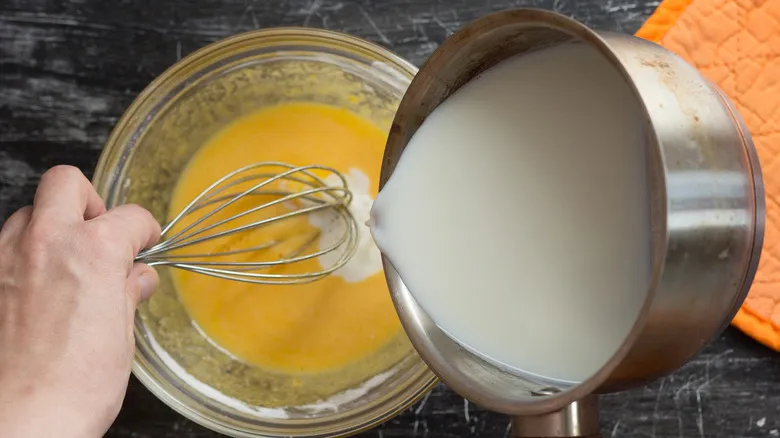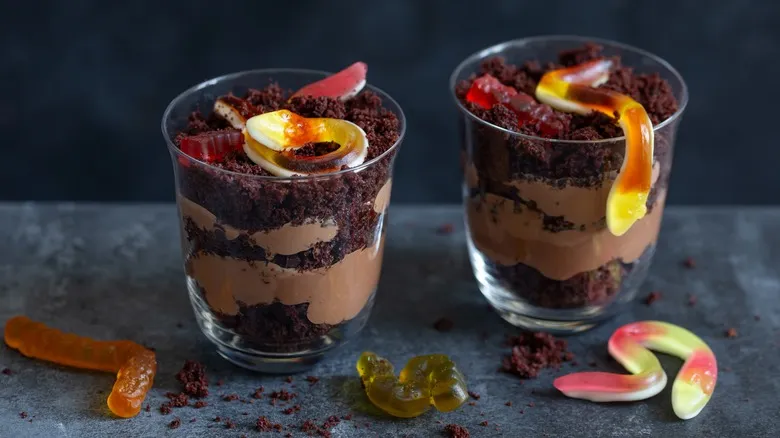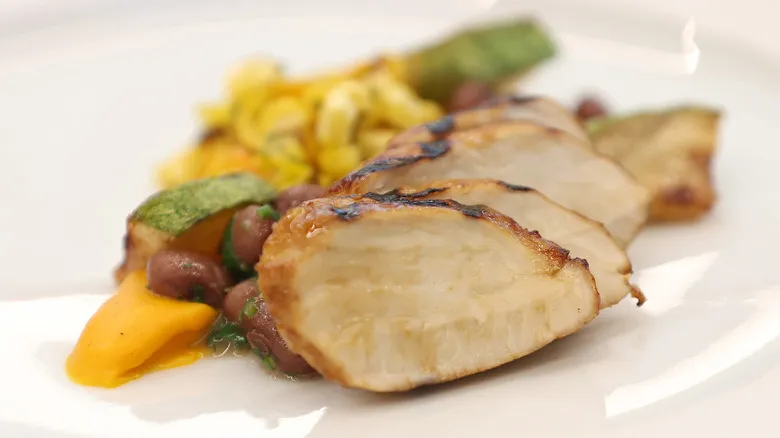How to make crème brûlée in a sweet potato, step-by-step

This dessert may look impressive, but it's surprisingly simple to prepare. Start by roasting your sweet potatoes. First, wash and dry them, then poke a few holes in each with a fork to let steam escape while they bake. You can roast them either unwrapped or in aluminum foil. Sweet potatoes wrapped in foil usually come out fluffier and more cake-like inside, which is great for enhancing your custard later on.
While the potatoes are baking, you can prepare the custard. Combine egg yolks, sugar, milk, and heavy cream, then heat the mixture until it thickens slightly. By the time your custard is ready, the sweet potatoes should be almost done. Let them cool before slicing them in half. Be cautious with your cut; you want to avoid piercing the bottom or sides completely, or your custard might leak out before it sets.
Next, use a fork to separate the potato flesh from the skin. You might need to scoop out some of the insides, but be sure to leave a good amount in the skin. Mash the flesh down into the bottom of the skin with the fork before pouring in your custard. Some recipes suggest returning the custard-filled sweet potatoes to the oven to set completely, while others recommend adding the sugar topping at this stage and using a torch to caramelize it.
@jun.and.tonic
Would you give sweet potato crème brûlée a try? ? #cremebrulee #sweetpotato #dessert
? A Summer Place – Hollywood Strings Orchestra
What makes a Japanese sweet potato perfect for this dessert

While you can use a standard sweet potato for this recipe, if you have the opportunity to find authentic satsumaimo, it's definitely worth it. Unlike the more common orange-fleshed sweet potatoes found in the U.S., the Japanese variety features a unique purple-reddish skin and a pale whitish-yellow interior. Its flavor is significantly sweeter—almost nutty—and more concentrated, with an intensity that increases when roasted. Many people say that the aroma of roasted satsumaimo resembles caramel.
Another notable aspect of Japanese sweet potatoes is their texture. When cooked, the flesh becomes creamy, nearly buttery, and fluffy, distinguishing it from the softer, moister texture of orange sweet potatoes. This difference is due to the higher starch content in Japanese varieties compared to their American counterparts.
Like orange sweet potatoes, Japanese sweet potatoes are also nutritionally dense, offering a wealth of vitamins A and C, along with dietary fiber and potassium. They are also fat-free and contain very little sodium.
Recommended

What The Heck Is Baking Chocolate And How Do You Use It?

Great Depression Era Tomato Soup Cake Is Still A Great Shortcut

The Reheating Mistake That Can Shatter Your Casserole Dishes

The Simplest Way To Elevate No-Bake Dirt Cakes
Next up





